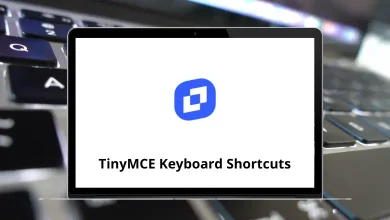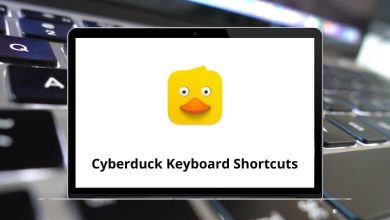13 Best Blender Alternatives & Competitors
Blender is a free 3D design software that many people use to create 3D models, animations, visual effects, and game content. It’s popular because it costs nothing and has a helpful community of users. However, for those looking for Blender alternatives, it’s worth noting that this software isn’t perfect for everyone.
Table of Contents
Some people need special features, better connection with other professional software, or a simpler design that’s easier to use. That’s why it’s worth looking at other options. Whether you make digital sculptures, design buildings, or create moving graphics, there are several other programs that might work better for what you’re trying to do.
Read More: 160 Blender Keyboard Shortcuts
Top 13 Blender Alternatives & Competitors
We will show you 13 alternatives to Blender that might better fit your specific creative needs and help you pick the right one for your next project.
1. Autodesk Maya
Autodesk Maya is a professional 3D modeling, animation, and rendering software widely used in the film, TV, and game development industries. Known for its robust feature set and deep control over animation workflows, it’s a leading choice for studios that demand precision and scalability. Maya is often seen as a top-tier Blender competitor due to its advanced capabilities and industry-standard adoption.
Features of Autodesk Maya:
- Powerful rigging and character animation tools
- Advanced dynamics and simulations (nCloth, Bifrost, Bullet)
- High-quality Arnold renderer integration
- Custom scripting with MEL and Python
- Non-destructive modeling workflows
92 AutoDesk Maya Keyboard Shortcuts
Pros of Autodesk Maya:
- Trusted by major studios in film and gaming
- Excellent for character animation and visual effects
- Highly extensible with plugins and scripting
Cons of Autodesk Maya:
- Expensive licensing compared to Blender
- Steeper learning curve for beginners
Best For: Professional animators, VFX artists, and studios requiring a robust, industry-accepted alternative to Blender.
2. ZBrush
ZBrush by Pixologic is a leading digital sculpting software known for its ability to handle complex, high-resolution models with ease. Unlike traditional 3D modeling tools, ZBrush uses a brush-based workflow that mimics digital clay sculpting, making it a preferred Blender alternative for character artists, sculptors, and concept designers.
Features of ZBrush:
- Dynamic sculpting with millions of polygons
- DynaMesh and ZRemesher for topology control
- Polypaint for direct mesh painting
- Subtools for managing multiple model parts
- GoZ for quick integration with other 3D software
Pros of ZBrush:
- Industry-leading sculpting capabilities
- Handles very high-poly models efficiently
- Strong community and tutorial support
Cons of ZBrush:
- Limited traditional 3D modeling tools
- Interface can be non-intuitive for new users
Best For: Digital sculptors, character artists, and concept designers looking for a specialized tool that surpasses Blender in high-detail sculpting workflows.
3. Cinema 4D
Cinema 4D, developed by Maxon, is a 3D modeling, animation, and motion graphics software known for its ease of use and integration with Adobe tools. It’s a popular Blender competitor in the motion design and broadcast graphics industries due to its intuitive interface and powerful MoGraph toolset.
Features of Cinema 4D:
- MoGraph tools for procedural animation
- Real-time viewport with GPU rendering
- Seamless integration with After Effects
- Non-destructive modeling workflow
- Built-in Redshift renderer (with subscription)
90 Cinema 4D Keyboard Shortcuts
Pros of Cinema 4D:
- Beginner-friendly interface and learning curve
- Strong motion graphics and animation tools
- Stable performance with fast rendering options
Cons of Cinema 4D:
- Subscription-only pricing model
- Less suitable for high-detail sculpting or simulation-heavy workflows
Best For: Motion designers, visual artists, and 3D animators looking for a user-friendly Blender alternative for design-centric projects and animations.
4. Autodesk 3ds Max
Autodesk 3ds Max is a powerful 3D modeling, rendering, and animation software widely used in architectural visualization, game development, and product design. Known for its precision and flexibility, it stands out as a reliable Blender competitor, especially in industries focused on design visualization and environment modeling.
Features of Autodesk 3ds Max:
- Editable poly modeling and spline-based workflows
- Advanced rendering with Arnold and third-party engines
- Integrated particle systems and physics simulations
- Extensive plugin ecosystem
- MAXScript and Python scripting for customization
130 Autodesk 3ds Max Keyboard Shortcuts
Pros of Autodesk 3ds Max:
- Ideal for architectural and hard-surface modeling
- Strong integration with AutoCAD and other Autodesk tools
- Large library of tutorials and third-party assets
Cons of Autodesk 3ds Max:
- Windows-only platform
- High subscription cost compared to Blender
Best For: Architects, visualization professionals, and environment artists who need a structured and CAD-friendly Blender alternative.
5. SketchUp
SketchUp is a 3D modeling software known for its simplicity and speed, particularly in architectural and interior design contexts. It offers an intuitive, drag-and-drop interface that appeals to beginners and professionals alike. As a Blender alternative, it shines in conceptual design, space planning, and visual presentations.
Features of SketchUp:
- Push/pull modeling for quick shape creation
- Extensive 3D Warehouse with pre-built models
- Layout tool for 2D documentation
- Real-time shadow and light simulation
- Plugin support via Extension Warehouse
15 Sketchup Keyboard Shortcuts
Pros of SketchUp:
- Extremely user-friendly, even for beginners
- Great for architectural and interior design
- Free web-based version available
Cons of SketchUp:
- Limited tools for animation or complex modeling
- Not ideal for organic modeling or VFX work
Best For: Architects, interior designers, and educators looking for a fast and simple Blender competitor focused on design and presentation.
6. Houdini
Houdini by SideFX is a high-end 3D software renowned for its node-based procedural workflow. It excels in simulations, VFX, and complex procedural generation. As a Blender competitor, Houdini is widely adopted in the film and game industries where control, flexibility, and realism are critical.
Features of Houdini:
- Node-based procedural modeling and animation
- Industry-leading VFX simulation (fluid, smoke, destruction)
- Powerful rendering via Karma and third-party engines
- Houdini Engine for integration with Unreal, Unity, and Maya
- Python and VEX scripting support
150 Houdini Keyboard Shortcuts
Pros of Houdini:
- Unmatched control over simulations and effects
- Highly scalable for large, complex projects
- Widely used in professional VFX pipelines
Cons of Houdini:
- Steep learning curve, especially for beginners
- Interface and workflow may feel complex compared to Blender
Best For: VFX artists, technical directors, and simulation specialists needing a robust, procedural Blender alternative for film and high-end game development.
7. Daz Studio
Daz Studio is a 3D character creation and rendering tool focused on photorealistic imagery and animation. It offers ready-made models, poses, and scenes, making it a practical Blender alternative for users who prioritize ease of use and quick results in character design and storytelling.
Features of Daz Studio:
- Drag-and-drop character creation
- Morphing tools and pose control
- Built-in Iray renderer for photorealistic output
- Extensive asset marketplace
- Auto-fit clothing and accessories
120 DAZ Studio Keyboard Shortcuts
Pros of Daz Studio:
- Beginner-friendly with minimal learning curve
- Ideal for character-based art and scenes
- Free to use with optional paid assets
Cons of Daz Studio:
- Limited modeling and sculpting capabilities
- Heavy reliance on pre-made assets
Best For: Artists, writers, and content creators looking for a simple Blender competitor to create and render 3D characters without advanced modeling skills.
8. Wings 3D
Wings 3D is an open-source subdivision modeler focused on polygonal modeling. It offers a streamlined environment for creating low- to mid-poly models without the complexity of animation or rendering tools. As a lightweight Blender alternative, it’s especially suited for hobbyists and game asset creators.
Features of Wings 3D:
- Context-sensitive modeling tools
- Support for materials and UV mapping
- AutoUV for easy texture mapping
- Integration with external renderers
- Multi-platform (Windows, macOS, Linux)
Pros of Wings 3D:
- Free and open-source
- Easy to learn and use
- Great for clean polygon modeling
Cons of Wings 3D:
- No native animation or sculpting tools
- Interface feels outdated for modern users
Best For: Indie developers and hobbyists seeking a simple, free Blender competitor for pure 3D modeling tasks.
9. Autodesk Fusion 360
Autodesk Fusion 360 is a cloud-powered 3D CAD, CAM, and CAE platform used primarily for product design, engineering, and manufacturing. While it’s not aimed at animation or VFX, it serves as a strong Blender alternative for users focused on precision modeling and industrial design.
Features of Autodesk Fusion 360:
- Parametric and direct modeling
- Integrated simulation and generative design tools
- Cloud collaboration and version control
- Built-in CAM for manufacturing workflows
- Realistic rendering and documentation tools
Pros of Autodesk Fusion 360:
- Excellent for mechanical and product design
- Combines design, engineering, and manufacturing in one tool
- Cloud-based collaboration features
Cons of Autodesk Fusion 360:
- Not intended for animation or organic modeling
- Requires an Autodesk account and subscription for full features
Best For: Engineers, product designers, and makers needing a precise, engineering-focused Blender competitor for CAD and fabrication projects.
10. Spline 3D
Spline 3D is a modern, browser-based 3D design tool focused on creating real-time, interactive 3D content. It combines ease of use with fast rendering, making it a strong Blender alternative for web designers, UI/UX teams, and interactive content creators looking for lightweight, web-native solutions.
Features of Spline 3D:
- Real-time editing in the browser
- Interactive object animations and behaviors
- Collaboration tools for team projects
- Simple export for web and app integration
- Clean, intuitive UI with minimal learning curve
Pros of Spline 3D:
- Web-based no installation required
- Ideal for 3D UI, websites, and prototypes
- Fast learning curve with a modern interface
Cons of Spline 3D:
- Not suitable for high-end modeling or simulation
- Internet connection required for access
Best For: Web designers, UI/UX professionals, and digital artists looking for a lightweight, browser-friendly Blender competitor for interactive design.
11. Womp 3D
Womp 3D is an intuitive, web-based 3D modeling tool designed for ease of use and accessibility. With a focus on real-time collaboration and a clean interface, it positions itself as a beginner-friendly Blender alternative, especially for those interested in quick modeling, playful design, or educational use.
Features of Womp 3D:
- Real-time collaborative modeling
- Simple drag-and-drop interface
- Cloud-based access with autosave
- Voxel-style modeling with smooth curves
- Export to standard 3D formats (e.g., .glb, .obj)
Pros of Womp 3D:
- Extremely easy to use with minimal learning curve
- No downloads accessible from any modern browser
- Fun and creative for casual design
Cons of Womp 3D:
- Not suitable for professional animation or VFX
- Limited control over complex geometry or topology
Best For: Beginners, educators, and casual designers seeking a playful and approachable Blender competitor for simple 3D creation.
12. Art of Illusion
Art of Illusion is an open-source 3D modeling and rendering software primarily aimed at hobbyists and educators. While not as advanced as Blender, it offers a straightforward interface and essential features for basic modeling, animation, and rendering. It serves as a lightweight Blender alternative for users interested in free, accessible 3D design.
Features of Art of Illusion:
- Subdivision surface modeling
- Built-in raytracer for rendering
- Keyframe-based animation tools
- Plugin support to extend functionality
- Cross-platform (Windows, macOS, Linux)
Pros of Art of Illusion:
- Free and open-source with active development
- Simple and clean interface
- Good for learning foundational 3D concepts
Cons of Art of Illusion:
- Lacks advanced sculpting or simulation tools
- Outdated UI compared to modern alternatives
Best For: Educators, hobbyists, and learners looking for a free and simple Blender competitor to explore basic 3D modeling and animation.
13. Rhinoceros 3D
Rhinoceros 3D (or Rhino) is a precision-based 3D modeling software known for its advanced NURBS modeling capabilities. Used extensively in architecture, industrial design, and jewelry making, Rhino stands out as a powerful Blender alternative for projects that require mathematical accuracy and complex surface modeling.
Features of Rhinoceros 3D:
- NURBS modeling for curves and complex surfaces
- Grasshopper for parametric design and automation
- Broad file format support for interoperability
- Scripting with Python and RhinoScript
- Strong plugin ecosystem for rendering, CAM, and analysis
60 Rhinoceros 3D Keyboard Shortcuts
Pros of Rhinoceros 3D:
- Exceptional control over geometry and precision
- Ideal for architectural and product design workflows
- Powerful parametric design through Grasshopper
Cons of Rhinoceros 3D:
- Limited built-in tools for animation or VFX
- Steeper learning curve for those new to CAD modeling
Best For: Architects, product designers, and engineers needing a geometry-focused Blender competitor for precise 3D modeling and fabrication.
Why Consider Blender Alternatives?
Blender is a versatile and popular 3D tool, but it’s not always the perfect fit for every user. Here’s why you might consider switching to or supplementing it with a Blender alternative:
- Steep Learning Curve: Blender’s interface and workflows can be challenging for new users or those coming from other 3D software.
- Limited Industry Integration: Many professional pipelines, especially in film and AAA game development, rely on tools like Maya, 3ds Max, or Houdini.
- Specialized Features Missing: Some Blender competitors offer advanced sculpting, CAD, or simulation features that Blender lacks.
- Performance Bottlenecks: In high-poly or simulation-heavy scenes, Blender may not perform as efficiently as commercial alternatives.
- Collaboration Challenges: Teams using other industry-standard tools may require file compatibility and format support not always native to Blender.
Exploring Blender alternatives ensures you’re using the best tool for your workflow, team, and creative goals.
Conclusion
While Blender remains a powerful and versatile tool in the 3D creation space, it’s not always the best fit for every project or professional need. From advanced sculpting in ZBrush to precision CAD modeling in Autodesk Fusion 360, the market offers a wide range of Blender alternatives that cater to different industries, workflows, and experience levels.
Whether you’re a motion designer, architect, product engineer, or hobbyist, choosing the right software can significantly improve both your productivity and creative output. The Blender competitors listed above provide specialized capabilities some with a gentle learning curve, others with deep customization and power.
Explore a few, test their features, and consider how each aligns with your goals. The right tool can make all the difference in turning your ideas into stunning, efficient 3D work.
READ NEXT:





